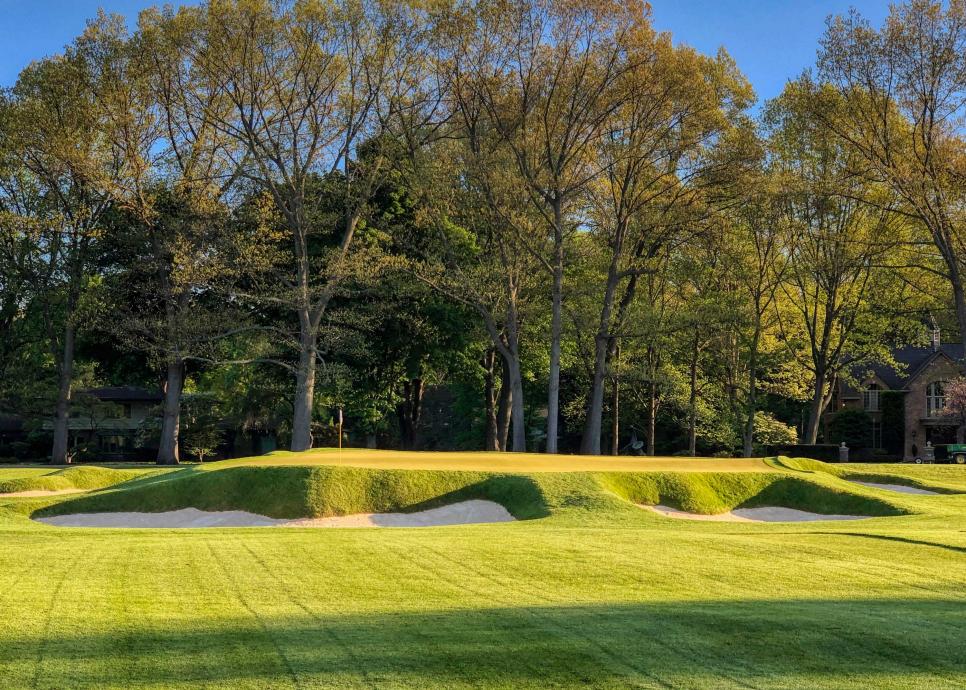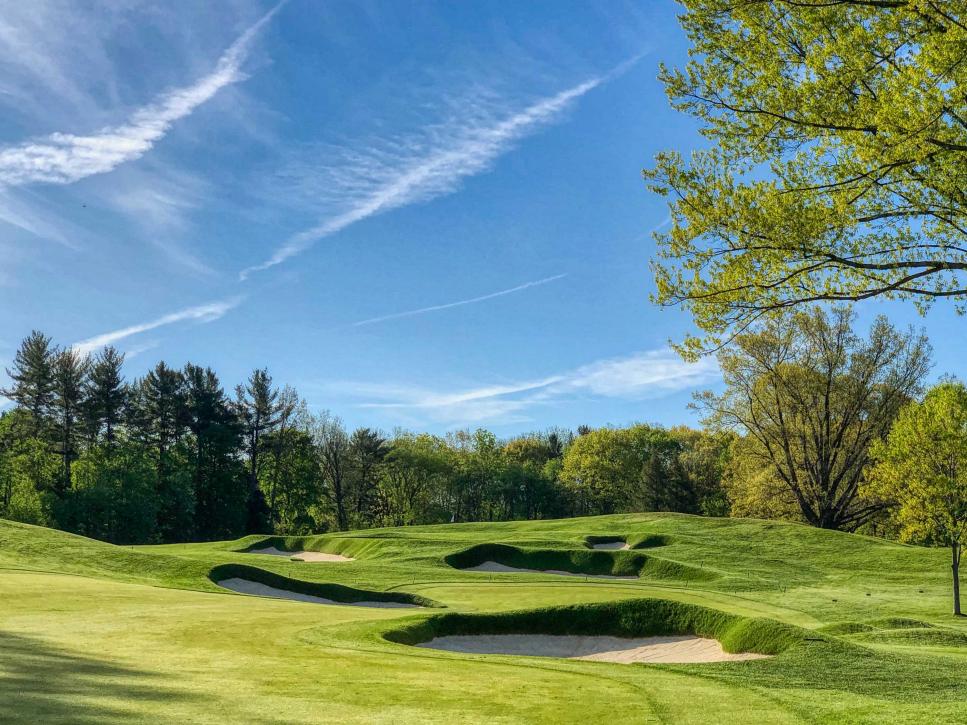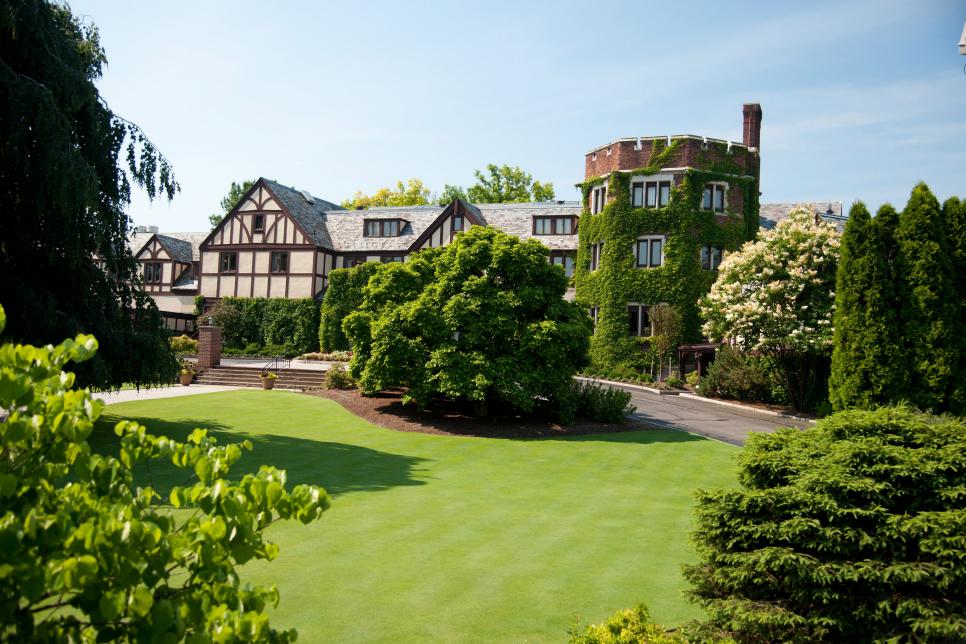Two of the major story lines from the 2022 PGA Championship were the weather and the revamped architecture of Southern Hills Country Club. Players and spectators got a taste of every season in Tulsa, from the expected warmth and humidity to gusty winds and chilly temperatures dipping into the 50s. Gil Hanse and Jim Wagner’s 2018 course restoration, meanwhile, changed the complexion of Southern Hills’ treelined visage and brought back the multidimensionality of the old Perry Maxwell-designed green complexes that for decades had been covered in thick Bermuda rough.
Fast forward 12 months to the 2023 PGA Championship and these themes will be relevant again when the PGA of America heads to Oak Hill Country Club in Rochester, N.Y. If the springtime weather in Oklahoma was unpredictable, even wilder climate swings are possible in upstate New York in mid-May. And like Southern Hills, Oak Hill’s historic East Course, host of three previous U.S. Opens and three PGA Championships, plus a Ryder Cup and two U.S. Amateurs, has undergone a major renovation that will leave viewers wondering what happened to the old, tree-cloistered Oak Hill they used to know.
Here's a first look at the 2023 PGA Championship venue.
PLAYING WITH FIRE—AND ICE?
It was 2015 when the club was named host the 2023 PGA, and the expectation at the time was it would be held in the major’s traditional August spot on the golf calendar. But in 2018, the PGA Championship shifted to May, with Oak Hill among the previously named venues that most likely worried PGA of America officials, understanding a particularly harsh or prolonged winter could hinder course preparations with the pushed-up date.
During a visit to Oak Hill the week of the PGA Championship at Southern Hills, the weather was volatile. It rained early in the week, and on Tuesday morning temperatures were in the 40s with blustery winds between 20 and 30 mph. That’s not uncommon, nor is it particularly severe. Caddies wore gloves and stocking hats, but at least there wasn’t snow—locals know that’s a possibility, even in May.

The sun broke out in afternoons during out visit to Oak Hill (par-3 fifth green shown), but morning temperatures were in the 40s. (Photo by Derek Duncan)
By the end of the day and into the following morning, however, the sun was out and the winds had calmed. A good bet is that morning rounds will be cold and brisk, and what side of the draw players find themselves on could be a factor (sound familiar?). The course conditions also will be more benign for scoring—the fall fescue roughs not as hearty, the bent greens won’t be as racy as they would be during the summer. Even the appearance of the course will be different as the hardwoods—oaks, maple, elm and cherry—were only beginning to bloom and produce foliage.
The good news is the northern latitude allows for more daylight, so rounds can go deeper into the evening if play is slow.
A DENUDED LANDSCAPE
When Jason Dufner won there during the 2013 PGA, the last time most of us saw the course, Oak Hill was the quintessential parkland championship course with small, sloping greens and tight fairways shadowed by forests of hardwoods and pines. The East Course had become so overgrown with mature trees that tee shots landing in the fairways sometimes didn’t have clear lines into the greens.

The view of the green on the par-4 12th hole from the fairway. (Photo by Derek Duncan)
The club began an aggressive tree-removal program in the mid-2010s that continued through the recent Andrew Green renovation and remains an ongoing project. The deletion of dozens of the specimens that provided Oak Hill both its name and reputation gives the course more elasticity, healthier turf and better sight lines, at least if one values the visibility of horizons, target areas and other architectural elements.
It’s also produced a stunning transformation of the landscape, even more extreme (and more needed) than Southern Hills. That’s allowed for significant fairway expansion—not out to the original Donald Ross dimensions of the 1920s, but well beyond the recent 25-yard-wide landing strips of yesteryear. To a degree greater than at any point in Oak Hill’s tournament past, players will be able to attack holes off the tee and driving distances should be similar to what they were at Southern Hills.
A RESTORED LOOK
The shrinking of Oak Hill’s greens over the decades due to mowing patters and sand splash from the bunkers had greatly reducing the number of hole locations available. The bunkers also had lost their identity—many were added by Robert Trent Jones, who shuffled the hazards around during a renovation in the 1950s and most had taken on modern rounded forms indistinguishable from hundreds of other courses.

Looking up at the green on the short par-4 14th from the fairway. (Photo by Derek Duncan)
Green’s remodel is not a faithful restoration. He did not attempt to rebuild exactly or in exact places what Ross had laid out in plans and on the ground. But Green did capture the spirit of an older mode of bunker shaping with more intricate edging, level bunker floors and vertical grass faces, as well as mimicking the early golf technique of benching bunkers into embankments and upslopes.
The result is a more severe-looking East Course with strong horizontal top lines and stark shadow contrast. Most bunkers have low entry points and steep back faces, and recovery chances will depend on where in the sand the ball comes to rest. This is especially true for fairway bunkers, which can extol a half- to full-stroke penalty if the ball settles near a face.
RETURN OF THE GREENS
Significant work has been done on the greens. Each was rebuilt and redesigned to reclaim corners and edges that had receded or become too pitched due to sand build-up. Most of the putting surfaces are enlarged and patterned in square-like formations with the occasional extended lobe for precision hole locations. This will allow tournament officials to move pins out to the perimeters. In most cases the greens are not extremely contoured so green speeds can be maxed out (or at least as high as the crew can get them in May), producing mostly long, flat bending putts as opposed to putts that snap and dip.

The greens on several holes, including the second, were rebuilt and redesigned to reclaim corners and edges that had receded or become too pitched due to sand build-up. (Photo by Derek Duncan)
Oak Hill has a compelling blend of short par 4s like the 12th and 14th, both potentially drivable depending on where the PGA of America sets the tees, and long, arduous two-shot holes, particularly Nos. 6-9, and 17 and 18. Two of the four par 3s will play between 230 and 250 yards to well-protected targets. But expect scoring to be linked closely to the weather—a cold upstate spring week will keep par numbers relevant, but if it’s reasonably warm and calm the course will yield to aggressive play.
OAK HILL COUNTRY CLUB—EAST COURSE
ROCHESTER, N.Y., 7,360 YARDS, PAR 70
DESIGNERS: Donald Ross (1925), with modifications by Robert Trent Jones (1955); George and Tom Fazio (1976); and Craig Schreiner (1993-1995).
MAJOR RENOVATION: Andrew Green (2019)

The clubhouse at Oak Hill.
Montana Pritchard/PGA of America
